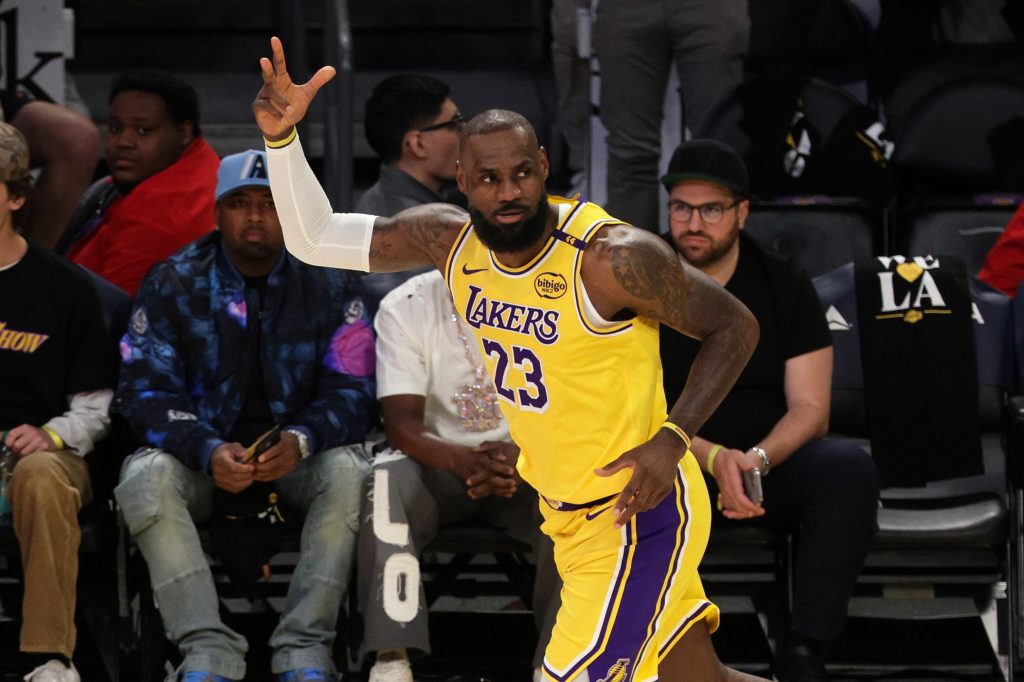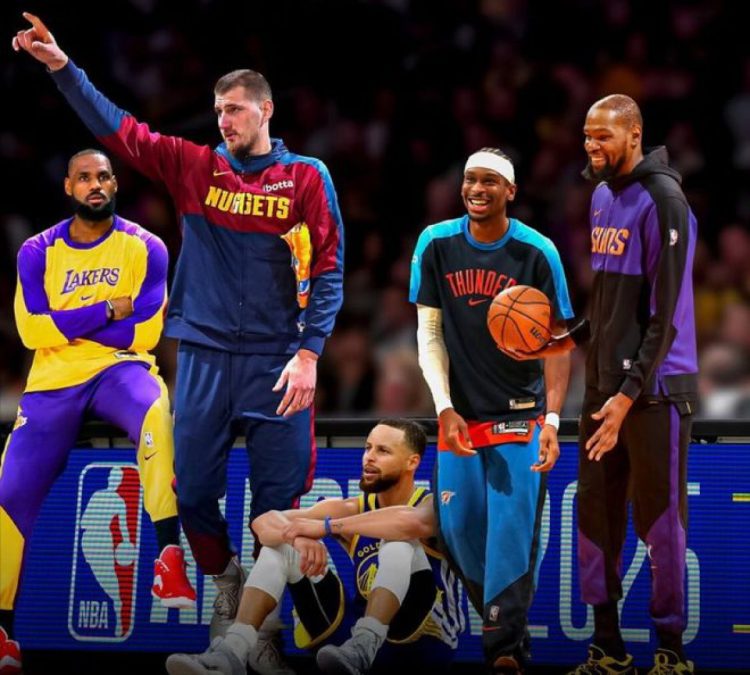The NBA has long been a league dominated by individual talent, but in recent years, a new trend has emerged that has reshaped the competitive landscape of professional basketball: the formation of superteams. Superteams are essentially squads that bring together multiple superstar players, often by way of free agency or trade, with the aim of creating a championship-contending team. This phenomenon has given rise to some of the most powerful teams in NBA history, but also sparked debate about whether such “star-studded” partnerships can lead to long-term success, or whether they are simply short-term solutions to bigger, more complex team-building challenges.
While superteams like the Miami Heat’s “Big Three” (LeBron James, Dwyane Wade, and Chris Bosh) and the Golden State Warriors with their addition of Kevin Durant have had their moments of dominance, the lasting effectiveness of these superteams remains a contentious issue. The question arises: Can a group of superstars, assembled with the intent to win titles, truly achieve sustainable success, or does the pressure of egos, injuries, and team chemistry make such partnerships inherently unstable?
This article will explore the history of NBA superteams, analyze the advantages and challenges associated with them, and examine whether the “star-studded” approach can lead to sustained success in the ever-evolving NBA.
1. The Rise of the Superteam: From the Celtics to the Heat
The concept of the superteam has existed in some form for decades, but it wasn’t until the 2000s and 2010s that the idea really took off and became more pronounced.
A. The Early Years: The Celtics’ Big Three
In the 2007-2008 season, the Boston Celtics created what was arguably the first true superteam of the modern era by trading for Kevin Garnett and Ray Allen to join forces with Paul Pierce. This trio, later dubbed the Big Three, was formed with one primary goal in mind: to win an NBA championship. Their pairing was a masterstroke by general manager Danny Ainge, combining Pierce’s scoring ability, Allen’s shooting, and Garnett’s elite defense. The Celtics went on to win the 2008 NBA Championship, defeating the Los Angeles Lakers in the Finals, and the Big Three era marked a new age of star-studded teams.
While the Celtics’ Big Three did not dominate for a decade, their success demonstrated the potential of assembling superstars with complementary skills to create a title contender. The question, however, still remained—could this formula be replicated and sustained by other teams?
B. The Miami Heat’s “Big Three”: A New Era of Superteams
In 2010, LeBron James made the controversial decision to leave the Cleveland Cavaliers and join forces with Dwyane Wade and Chris Bosh to form the Miami Heat’s Big Three. This partnership created a seismic shift in how NBA teams were constructed, with LeBron and Wade being among the top players in the league, and Bosh providing a versatile big man presence.
The Miami Heat’s “Big Three” took the NBA by storm, winning two NBA championships in 2012 and 2013. The Heat went to four straight NBA Finals from 2011 to 2014, solidifying their place in NBA history. However, the Heat’s dominance was also short-lived. LeBron left in 2014 to return to Cleveland, and the superteam broke up, ending an era of sustained dominance. Nevertheless, the impact of Miami’s superteam on the NBA was undeniable—it set a precedent for how star players could manipulate free agency to create championship-caliber teams.
C. The Warriors’ Dynasty and Durant’s Addition
The Golden State Warriors began their dominance in the mid-2010s, but the real turning point came in 2016, when Kevin Durant made the decision to join an already 73-win team. This move created perhaps the most potent superteam the NBA had ever seen. The combination of Durant, Stephen Curry, Klay Thompson, and Draymond Green made the Warriors nearly unstoppable, and they won two championships (2017 and 2018) with Durant in the fold. This era of Warriors dominance highlighted just how dangerous a superteam could be, but it also raised questions about the authenticity of such victories, with critics arguing that Durant’s move to Golden State stacked the deck too heavily in their favor.
Despite their success, the Warriors’ superteam was not immune to challenges. Durant eventually left in 2019 to join the Brooklyn Nets, and while the Warriors have continued to be a competitive team, their era of dominance has not been as consistent post-Durant.
2. The Advantages of Superteams: The Appeal of Star Power
Superteams have undeniable appeal and have shown that, in the right circumstances, they can lead to quick success and immediate championships.
A. Instant Championship Contenders
The most obvious advantage of assembling a superteam is that it can transform a team into an immediate championship contender. By bringing together multiple superstars, a team can rapidly improve its talent level, solidifying their status as one of the league’s elite teams. In the cases of the Heat’s Big Three and the Warriors with Durant, their newly-formed rosters were able to challenge for titles almost immediately, showcasing how quickly a team can rise to the top when star players unite.
B. Synergy and Talent Maximization
When the right combination of superstars comes together, it can elevate the performance of the entire team. In the 2016-2017 season, the Warriors demonstrated how synergy between the team’s stars could lead to an almost flawless basketball product. With Curry, Durant, Thompson, and Green, the team maximized each player’s unique skills, leading to one of the most dominant regular seasons and playoffs in NBA history. The same principle applied to Miami’s Big Three, where the complementary skill sets of LeBron, Wade, and Bosh made them difficult to defend, both offensively and defensively.
C. Attracting Talent and Building Around Stars
Once a team has one or more superstars, other talented players are often eager to join. This creates a snowball effect, where the team’s already elite status allows them to attract additional support players, further strengthening their roster. For example, Ray Allen’s decision to join the Miami Heat was in part due to the allure of playing with LeBron, Wade, and Bosh, and the Heat attracted key veterans who contributed to their championship runs.

3. The Challenges of Superteams: Do They Always Lead to Long-Term Success?
While the potential for instant success is high, the reality is that many superteams struggle to maintain their dominance over a long period of time. There are several significant challenges that come with the formation of such star-heavy rosters.
A. Egos and Chemistry Issues
One of the most difficult aspects of creating a superteam is managing the egos of multiple superstars. While stars like LeBron James and Dwyane Wade were able to co-exist, not every partnership is as harmonious. Durant’s decision to join the Warriors, for example, led to criticisms from the media and rival fans who felt that he had taken the “easy way out.” Additionally, the challenge of sharing the ball and defining roles on a team filled with stars can often create tension.
The need for all players to sacrifice for the greater good can also create friction. Players who are used to being the focal point of their previous teams may struggle with adapting to a reduced role or fewer touches on offense, which can hurt team chemistry.
B. Injuries and Longevity
Superteams are often built with an emphasis on top-tier talent, but injuries and the physical demands of the NBA can derail even the most promising squads. The Heat‘s Big Three, for example, eventually fell apart as the players aged and injuries took their toll, especially after LeBron James left in 2014. Similarly, the Warriors’ superteam was beset by injuries to key players like Stephen Curry and Klay Thompson, and when Durant also went down with an Achilles injury in 2019, the team’s dynasty was essentially over.
Injuries are unpredictable, and the physical wear and tear that comes with a superteam’s intensity and schedule can quickly derail the team’s chances of sustained success.
C. The “Short-Term” Nature of Superteams
Most superteams are, by their nature, short-term ventures. The goal is often to win a championship as quickly as possible, and once that goal is achieved, there’s little incentive for the players to stay together long-term. This was evident with LeBron James’s departure from the Heat in 2014 and Kevin Durant’s departure from the Warriors in 2019. The nature of free agency and trade dynamics often leads to roster changes, and maintaining a superteam for multiple seasons can be difficult, especially with salary cap constraints and the volatility of player movement.
4. Can Superteams Achieve Long-Term Success?
Ultimately, while the creation of a superteam can yield immediate success, achieving long-term dominance is much more difficult. The best-case scenario for a superteam is to win multiple championships over a short period of time, as seen with the Miami Heat and the Golden State Warriors. However, maintaining that level of dominance year after year—especially with the challenges of injuries, chemistry, and roster turnover—proves to be a difficult task.
A team that builds organically over time, with strong player development, smart acquisitions, and balanced team dynamics, may prove to be more sustainable in the long run. Teams like the San Antonio Spurs and Chicago Bulls were able to win multiple championships, not through a single star-studded partnership, but through strategic team-building, consistency, and chemistry.
In conclusion, while superteams can lead to short-term success, the challenges of maintaining cohesion, dealing with player egos, managing injuries, and dealing with roster changes can make it difficult for them to sustain success over a long period of time. The pursuit of building a superteam will likely continue in the future, but whether these teams can achieve sustained excellence remains an open question.


































Discussion about this post